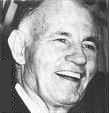
|
|
|
Affections of the Muscles
by Herbert M. Shelton
DP ND DC DNT DNSc DNPh DNLitt PhD DOrthop
THE HYGIENIC SYSTEM
ORTHOPATHY
Chapter 17
Muscles constitute the greater part of the total weight of the body and are found in all parts thereof. The muscles are subject to but few affections, but these may develop in any part of the body.
"CHARLEY HORSE"
Definition: This is a term applied to injury of a muscle resulting from over-exertion. It is heard of largely among athletes and their trainers.
Symptoms: Action of the muscle may be brought to an abrupt halt by a sharply acute and incapacitating pain and stiffness in the muscle. This is especially likely to happen in those who attempt strenuous exertion to which they are unaccustomed.
Etiology: Strenuous and unaccustomed exertion is the chief cause. The pain also often follows a blow to a strained muscle. Spasms incident to the readjustments within the muscle have caused congestion of blood in the muscle's vessels; these blood vessels are sometimes torn and there is bleeding into the tissue.
Care of the Patient: The usual care is heat, liniments and massage. Heat affords relief from pain, Liniment irritates and injures, massage delays tissue repair. Rest is the one and only need. If health is good, repair will be rapid; if the subject is enervated and toxemic, repair will be delayed. If health is poor, a brief fast will hasten repair.
Top
CONGENITAL AMYOTONIA
Definition: A congenital muscular deficiency characterized by flaccidity and lack of tone and power in the voluntary muscles, but without absolute paralysis as in atrophy of the muscles. It is also called Oppenheim's "disease."
Symptoms: Muscular weakness and flabbiness and lack of power in the muscles are the characteristic symptoms. The deep reflexes are diminished or lost. Unlike the muscular dystrophies to be later described, it does not "run in families" and there is no wasting of the muscles.
Etiology: This goes back to the nutrition of the mother, as the condition is congenital.
Prognosis: The condition usually disappears as the child grows older.
Care of the Patient: Good general hygiene is all that is required. Exercise, good nutrition and sunbathing are especially important. Babies should be given exercise from the start.
Top
CONGENITAL MYOTONIA
Definition: Also known as Thomsen's "disease," this is a condition characterized by tonic spasms of the muscles upon every attempt at voluntary movement and is said to be confined to certain families.
Symptoms: In addition to the muscular spasms following effort after a rest period, relaxation of the muscles follows persistence in use of the muscles and this continues while they are in use. The muscles are of average development, but are unduly irritable, quick blows producing contractions that are tetanic in character. The condition develops in childhood and is probably not truly congenital.
Etiology: We have cared for but one case of this kind and as the condition ended while fasting and did not return thereafter, we regard it as being of toxic origin.
Prognosis: It is said to continue through life. This seems to be due to failure to recognize and remove cause.
Care of the Patient: Other than fasting, improved nutrition, exercise and sunbathing are the only requirements. No doubt there is some muscular peculiarity that tends the individual to the development of this condition. Any return to toxemic living may, therefore, reproduce it.
Top
MUSCULAR DYSTROPHIES
Definition: This is an atrophic (wasted) condition of the muscles developing in early life and not dependent upon any lesion in the nervous system.
Symptoms: Three chief varieties are described as follow:
Pseudomuscular hypertrophy begins in childhood between the second and seventh years. Muscular weakness is the first symptom to attract attention. The child is awkward, stumbles, and seeks support in walking. As the condition progresses, the muscles, particularly those of the calf, thigh, and buttock, enlarge. The upper extremities are less often affected. While standing erect the child's feet are wide apart, its belly protrudes, and marked lordosis of the spine is evident. The gait is waddling in character and the child's manner of rising is characteristic. He straightens himself either by grasping his knees, or by resting his hands on the floor in front of him, extending the legs and pushing the body backward.
After a few years the paralysis becomes so great that the subject is unable to leave his bed, and the enlarged muscles undergo atrophy.
Erb's Juvenile Dystrophy: Developing usually between the ages of twelve and sixteen, this form usually starts with the muscles of the shoulder. The muscles may first hypertrophy (enlarge) before they waste (atrophy).
Landouzy — Dejerine Type: Usually developing in early childhood, this form is characterized by atrophy of the facial muscles on both sides of the face. It does not involve the tongue or muscles of swallowing.
Etiology: If you can find any cause In the following statements from medical authorities, you are a genius: "The disease usually manifests itself before puberty. It is more common in males than in females. It is frequently transmitted from generation to generation, and several members of the same family may be similarly affected." These are mere statistical summations.
It is our view that toxemia and malnutrition (perhaps deficiencies) account for these developments.
Prognosis: "The disease is incurable but the progress is slow," say the gods of medicine. Why not? Cause is unknown and no attention given to it.
Care of the Patient: Improved nutrition, graduated exercise, sun-baths and good general hygiene are the only requirements. If health is low, a fast will relieve the body of its toxic load. Massage and electricity, commonly advised, should be religiously avoided.
Top
MYALGIA (Muscular Rheumatism)
Definition: An affection of the voluntary muscles and their faciae, sometimes extending to the periosteum (investing membrane — covering — of the bones), and characterized by pain, which is aggravated by movement. When located in the muscles of the back, it is called lumbago; when in the chest, pleurodynia or intercostal neuralgia; in the neck, wry-neck or torticollis.
Symptoms: The pain varies in degree from a dull ache to an intense cramp. The pain is usually local and constitutional symptoms are slight. There is no fever. Malpositions and even contractures may result from the sufferer's efforts to avoid using the painful muscles. The condition may be either acute or chronic.
Etiology: Weger says: "Muscular rheumatism we classify as a fatigue intoxication." Tilden says: "People who develop it are subject to acetous fermentation in the stomach from eating food potentially acid and low in vitamin." Toxemia, regardless of origin, is present in all cases.
Acute myalgia follows overexertion, chilling and getting wet when the body is overheated — but only in toxemic subjects. Chronic myalgia is seen in neurasthenia, anemia, gout, diabetes, chronic nephritis and arteriosclerosis. Many cases supposed to be chronic lumbago are due to injuries to or malpositions of the spine and sacroiliac joint, strain, arthritis of the spine or to reflex pains from pathology in the pelvis.
Prognosis: This is good.
Care of the Patient: Weger says: "It is rapidly relieved by doing without food for a while, or more slowly but yet effectively, by making proper changes in the eating habits of the patient." Rest is very essential if the pain is great and no food should be given so long as the pain lasts. The sufferer should be kept warm. After the pain has ceased, good general hygiene — proper food, daily exercise, sun-baths, rest and sleep, mental poise and freedom from all enervating habits — will prevent a recurrence.
Top
MYASTHENIA GRAVIS
Definition: An affection of the muscles characterized by rapid exhaustion of the muscles upon slight exertion and recovery after a brief rest.
Symptoms: The chief complaint of the sufferer is that he tires rapidly and completely and out of all proportion to his exertion. All the muscles of the body may be affected, but usually only some of them are. Those supplied by the cranial nerves are most frequently involved. One of the first symptoms often observed is a drooping of the upper eyelids. In order to see, the individual is forced to throw his head backward to permit the light to enter the narrow slit below the lid margin. Sometimes the muscles of the jaw are so affected that the act of chewing is so wearisome that food will need to be disgorged to prevent choking — pseudo-bulbar palsy. Or a woman may report that the first sign of the trouble she noticed was so great exhaustion on attempting to fix her hair that she could not complete the job due to inability to raise the arms. Atrophy and degeneration of the muscles are not present.
Etiology: "No one knows the cause of myasthenia gravis," say medical authorities. They think it may be a deficiency state. Toxemia and malnutrition are present in all cases.
Prognosis: "The disease lasts for years, and remissions are common," say medical men. Our own experience with this condition has been very limited, but recoveries were uniform and fairly rapid.
Care of the Patient: The cases we have handled have made rapid improvement on the following program: Fasting and rest to eliminate toxemia, followed by a diet largely of fresh fruits and green vegetables and accompanied by exercise and sunbathing. Massage, electricity, strychnine and other so-called tonics are enervating and valueless.
Top
| Success of DETOXIFICATION = failure of drugs and other toxins |
 |
To learn more about drug-free healing, and the failure of drugs - read this article by Dr. Shelton: HOW DISEASES ARE CURED
"What does the average individual know about keeping well? Almost nothing."
|
| Examples of Remarkable Recoveries |
 |
|
Free download:- Dr. S Bass: REMARKABLE RECOVERIES FROM SEVERE HEALTH PROBLEMS - booklet presenting how raw foods and juices have been used clinically in medical institutions for over 150 years to help patients detoxify, and recover from cancer and other diseases.
(Note: this detox method is excellent for self-help. While fasting requires professional help for optimal results.)
|
| SELF-HELP NOTE |
 |
|
This summary of diseases by Dr. Shelton is somewhat technical, and mainly compiled for doctors. For the basics of self-healing click here, or read the articles on Dr. Bass' website www.drbass.com. For self-help, read what doctors of Natural Hygiene & Orthopathy have written for 175 years, much of it is online. E.g. at soilandhealth.org (the Health Library) and non-profit INHS..
|
2005 update:
About the newest developments in drug-free healing & Natural Hygiene - e.g. primitive diets and the insulin mechanism - click here.
Go to next chapter
Ask Dr. Bass
Index
|
|
|








